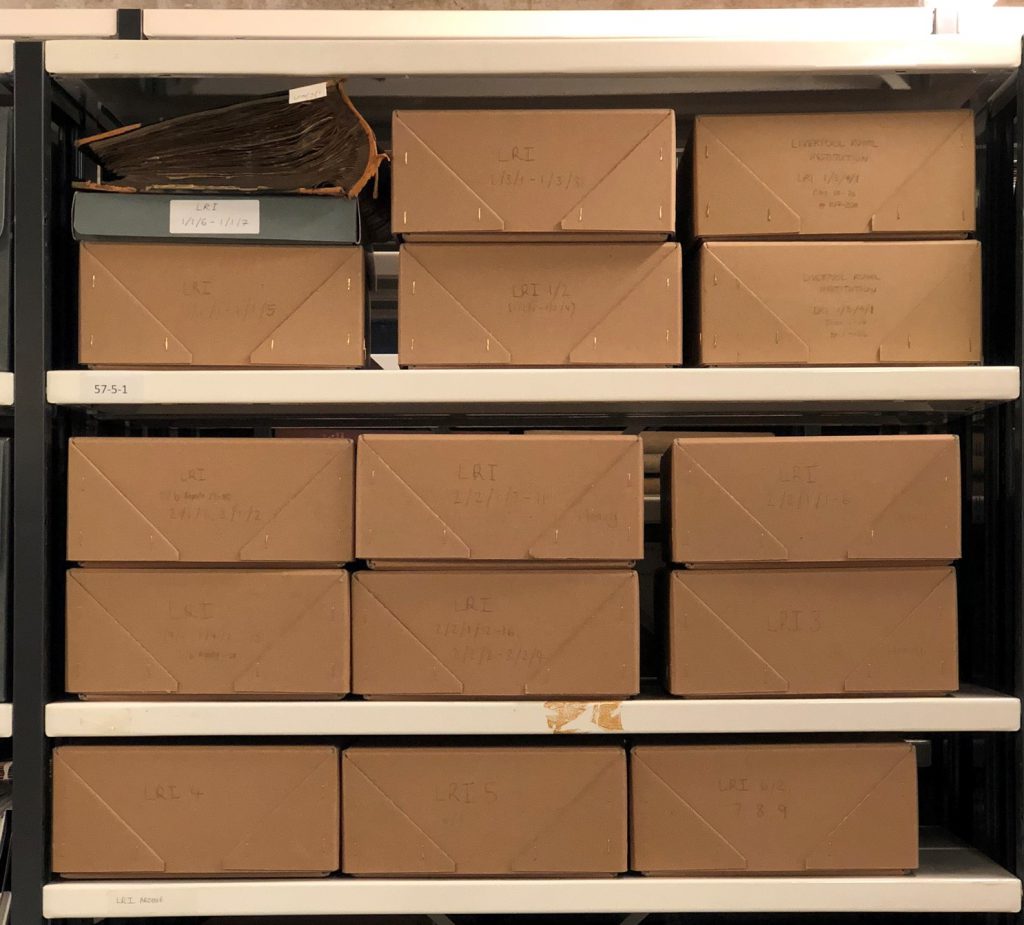This post was written by 2nd year History student Maisy Portwood. Maisy worked on the LRI archive catalogue during a placement at Special Collections and Archives.
I signed up for the History in Practice module to find out more about working in the world of history. My placement in Liverpool University’s Special Collections and Archives (SC&A) has opened my eyes to the role of an archivist. With my typical semester consisting of essay upon essay, I thoroughly enjoyed the much more hands-on approach that the archives offered.
My main task was to work on the archive of the Liverpool Royal Institution (LRI) that is housed within SC&A. It is possible that the catalogue for the LRI archive had not been looked at for quite some time. The prospect of re-cataloguing the LRI archive, making it more accurate and overall, more accessible was quite exciting, and it feels (just a little bit) like I have helped to shape the history of the LRI.
What was the Liverpool Royal Institution?

Established in a meeting on the 31st of March 1814, the LRI was to be a society “for promoting the increase and diffusion of Literature, Science and the Arts”. Money was raised by subscription, and in July 1817, the Institution finally purchased a property on Liverpool’s Colquitt Street. Here, the Institution set up academic schools, public lectures and societies, and also founded a museum, library and art gallery.

I was pleased to discover that the LRI building is still standing. The property now houses a games arcade, an exclusive bar and even student accommodation. It was really fascinating to discover how the role of the LRI building in modern-day compared to its 19th and early 20th century functions. The building is still used by students, just in a different way.
The collection allows us to see that over the course of these two centuries, the LRI was successful in achieving its goal. Many students taught at the LRI’s school were able to make their way to prestigious universities including Oxford and Cambridge. Furthermore, pieces of art housed in its gallery made their way to Leeds National Exhibition of Art in 1868. Some interesting letters in the collection discuss the case of missing art after having lent them to the exhibition.
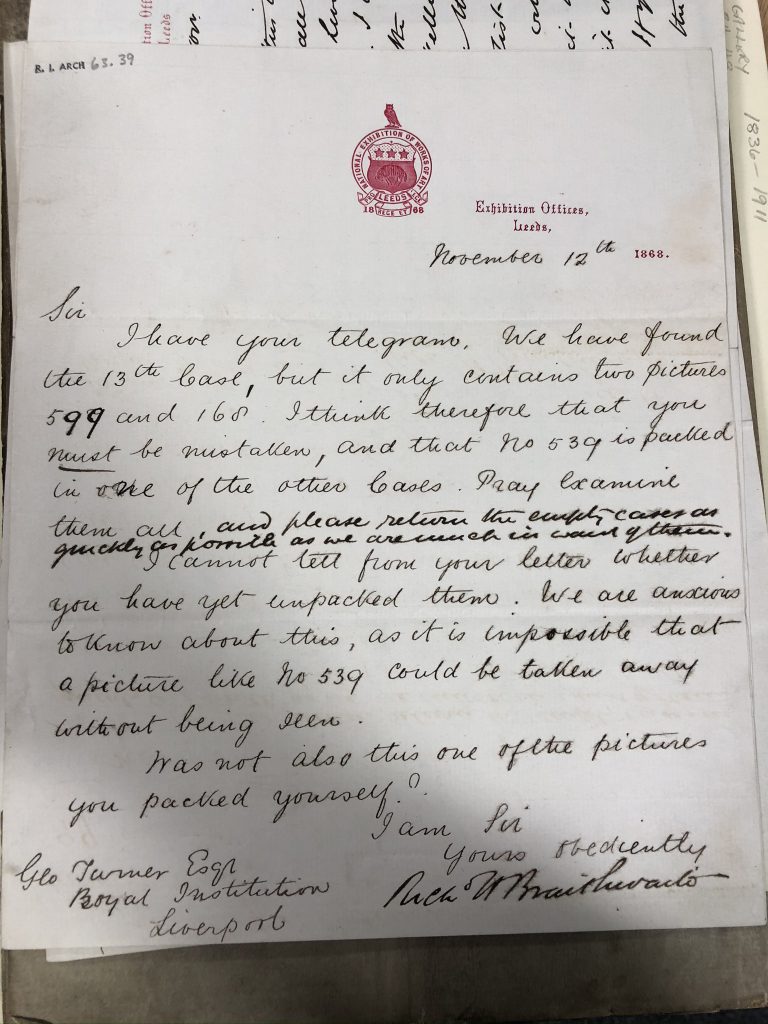
Unfortunately, the LRI did not survive as it had hoped; The Liverpool Royal Institute: A Record and Retrospect tells us that the Royal Institution began to decline at the end of the 19th century when newer establishments including the Walker Art Gallery were founded. The art gallery and museum closed in 1892, and soon after in 1894, the library and archives of the LRI were transferred to University College Liverpool. Much later, in 1941, the Institution briefly served as a Services Quiet Club for those serving in the armed forces. By 1948, the LRI was formally dissolved and remaining property was transferred to the University. As a result, this collection at SC&A is one of the only ways to gain an insight into the Institution today.
What does the collection include?
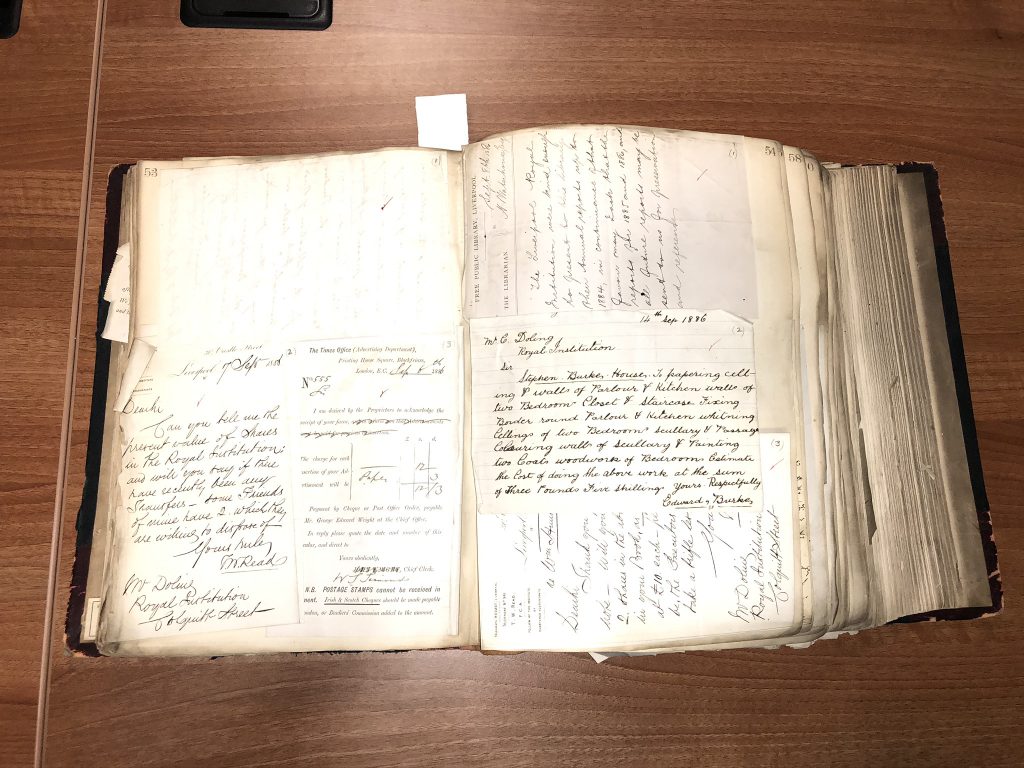
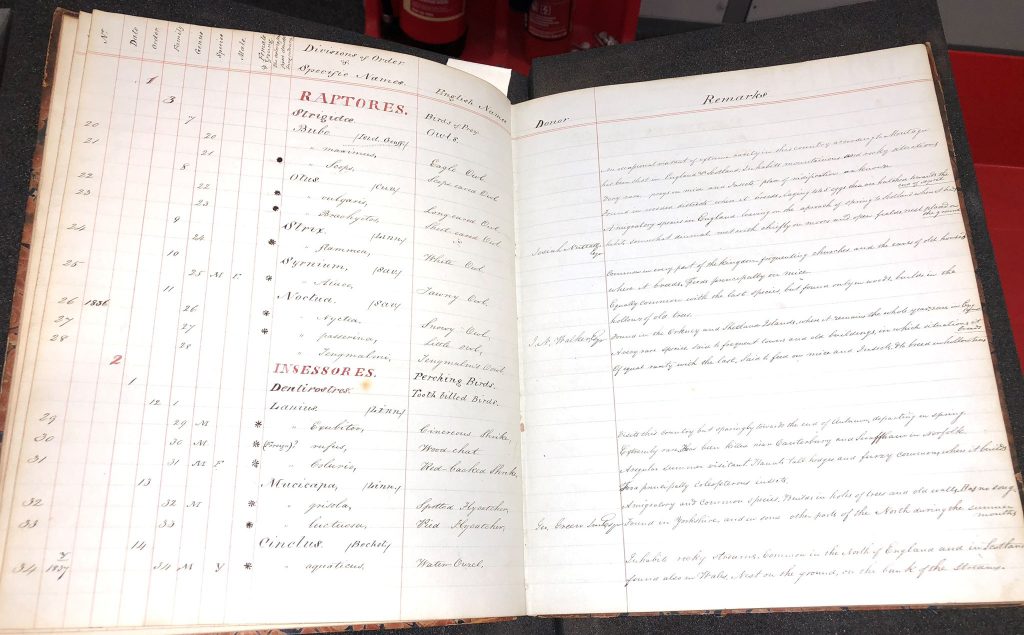
The collection dates from 1807 to 1947 and contains administrative and financial records and correspondence relating to the LRI and its collections, as well as some artefacts including a printer’s block and copper plates.
At first, I was sceptical of how interesting a few books and pages on the administration an institution could really be. However, after sifting through each piece in the archive, I realised that the collection paints an entire picture of the institution and its position in Liverpool’s history.

LRI 7/3 – 1894 bookplate 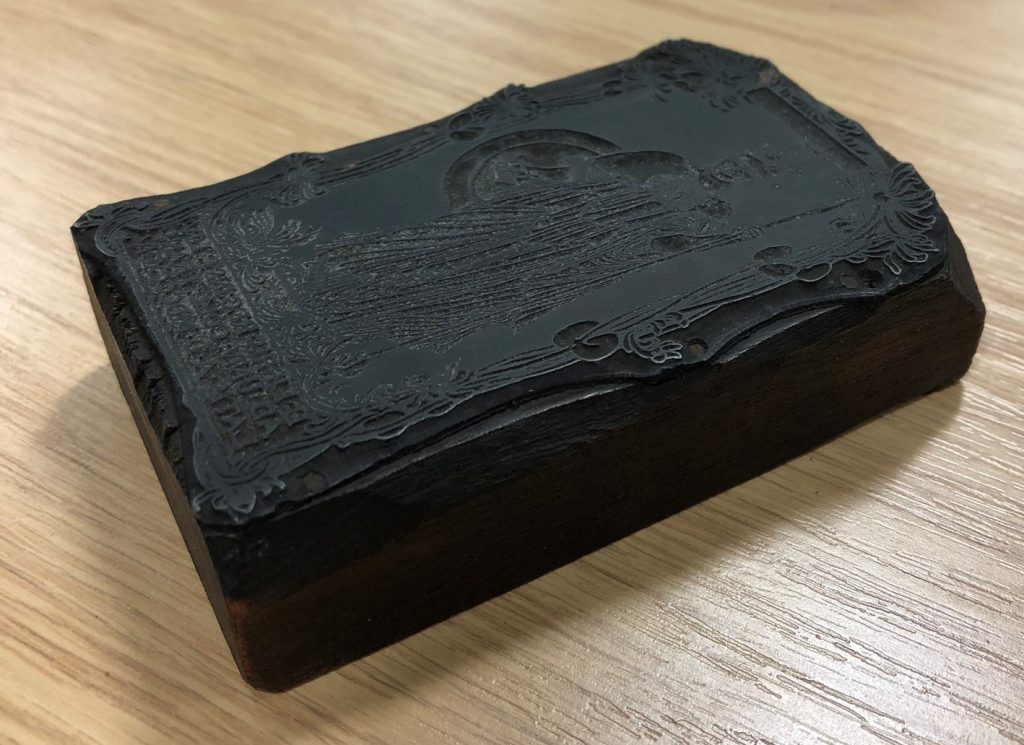
LRI 7/2 Small printer’s block of the 1894 bookplate. Engraved panel mounted on wood.
There were also quite a few recognisable names in the LRI’s documents. Sydney Jones was mayor of Liverpool until 1942, and also served on the committee of the LRI. The resolution below shows his signature, written on the year of his death. Jones held a great belief in the value of education and clearly saw the benefit of an Institution like the LRI. It struck me that I was sitting in the library named after Jones whilst reading documents signed by him.

I also came across one of the founders of the institution, William Rathbone IV, the great grandfather of Eleanor Rathbone. Rathbone was an MP, pioneer of family allowances and women’s rights in the 19th and 20th centuries, who also has a building named after her on the University of Liverpool campus. I found the lack of female influence in the Institution quite disappointing. So, being able to connect the LRI to someone as influential as Eleanor Rathbone was really fulfilling.
…
I am glad I was able to make the collection more accessible by updating the catalogue, adding additional material, and improving the organisation of the archive. I have really enjoyed my time at SC&A and have left my placement with a detailed knowledge and understanding of the LRI and of archival work. The archive of the LRI can be useful for anyone who wants to look at the history of Liverpool, its education and culture, and many notable people from Liverpool’s past.
